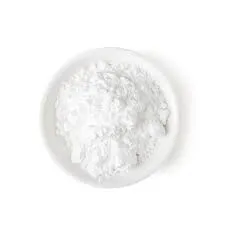The Role of Active Drug Substances in Pharmaceutical Development
In the field of pharmaceuticals, the term active drug substance (ADS) refers to the specific ingredient in a medication that is biologically active and intended to exert effects on the body. This core component is essential in determining the efficacy, safety, and overall therapeutic value of any given medication. Understanding the importance of active drug substances is crucial for pharmaceutical scientists and healthcare professionals, as they play a vital role in the development, regulation, and use of medications.
Definition and Importance
An active drug substance can be defined as a chemical compound that performs the desired pharmacological action to treat, prevent, or diagnose a disease. Unlike excipients, which are inactive ingredients used to form the drug product, the ADS is responsible for the therapeutic effects. For example, in a pain relief medication, the active drug substance—such as ibuprofen—provides the pain-relieving properties, while other components serve purposes like stabilization, solubility, or taste.
The importance of ADS in drug formulation cannot be overstated. The effectiveness of a medication hinges on its active components, making it imperative to research and develop these substances thoroughly. This involves extensive studies, ranging from initial laboratory synthesis and characterization to clinical trials assessing safety and efficacy in humans.
Development Process
The journey from discovery to market involves several critical stages for active drug substances. Initially, researchers identify a potential drug target through various approaches, including high-throughput screening of compound libraries. Once a potential ADS is identified, it undergoes rigorous preclinical testing to evaluate its pharmacokinetics, pharmacodynamics, toxicity, and therapeutic potential.
In the clinical development phase, the active drug substance is formulated into various dosage forms (tablets, injections, etc.) and tested in human subjects. The goal is to determine the appropriate dosage, administration route, and overall efficacy in alleviating the target condition. Regulatory authorities, such as the Food and Drug Administration (FDA) in the United States, have stringent guidelines ensuring that active drug substances meet safety and efficacy standards before they reach the market.
active drug substance

Regulatory Considerations
The regulation of active drug substances is a critical aspect of pharmaceutical development. Regulatory agencies require comprehensive documentation covering everything from the synthesis of the active ingredient to data supporting its safety and effectiveness. This includes adherence to Good Manufacturing Practices (GMP) to ensure consistent quality in production.
Moreover, the characterization of active drug substances plays a significant role in regulatory submissions. Characteristics such as purity, stability, and solubility must be meticulously documented. Any variation in these parameters can affect the drug's performance and, consequently, its approval.
Future Trends
Looking ahead, the field of active drug substances is poised for advancements driven by technology and scientific innovation. One notable trend is the growth of biologics and biotechnology-derived drugs, which use living organisms to produce therapeutic proteins. There is also an increasing emphasis on personalized medicine, where the active drug substance may be tailored to individual genetic profiles, leading to improved efficacy and reduced adverse effects.
Furthermore, advancements in drug delivery systems are improving how active drug substances are administered. Nanotechnology, for instance, allows for enhanced absorption and targeted delivery, maximizing the therapeutic effects while minimizing side effects.
Conclusion
Active drug substances are the cornerstone of modern medicine, underpinning the efficacy and safety of therapeutic agents. Their development is a complex process involving extensive research, regulation, and innovation. As the pharmaceutical landscape continues to evolve, the significance of active drug substances is increasingly evident, not only in creating effective treatments but also in the broader context of public health and disease management. Understanding and appreciating the role of these active ingredients will continue to be paramount as we move forward in addressing global health challenges.

